Contents
Many gardeners attribute the loss of apricot crops to temperature instability during their flowering period. But this is far from the only reason. What is meant by the term “apricot disease” and why is it important to know? We will answer these and many other questions on this topic today. There are many reasons that deprive us of the harvest. Among them are such diseases and pests of apricot: moniliosis, Vals fungus, bacterial spotting, verticillosis, cytosporosis, perforated spotting, and gum disease. How to correctly determine the cause and what methods of treatment? This will be discussed further.
Moniliasis
If you notice that your trees during the flowering period seem to be after a fire, and even before that, the temperature dropped sharply, do not rush to attribute everything to the latter, because the cause of such an unpleasant phenomenon is often the fungal disease moniliosis. Naturally, the temperature played an important role too, because it contributes to the reproduction of the monilia fungus, which penetrates through the flower pistil, which dries out the bud, leaves, twigs. In appearance, the consequences of the disease are similar to a monilial burn.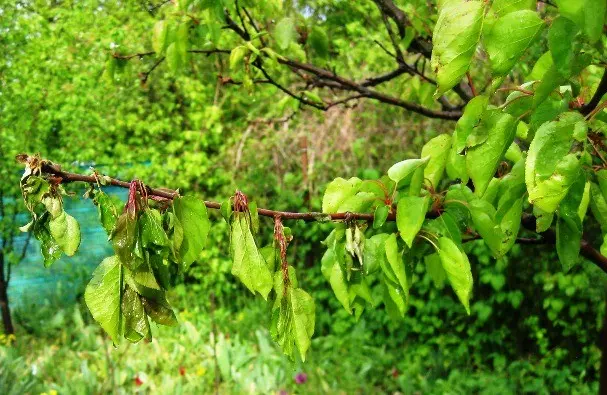
It is still possible to protect your crop from such an unpleasant phenomenon. First, keep a close eye on weather changes. Secondly, do not forget to treat the trees with Horus, Mikosan-V, Bordeaux mixture, Skorom or preparations that contain copper in late autumn, early spring and in the period after flowering. Thirdly, remember, as soon as you see signs of a monilial burn on one fruit tree, immediately treat all the others, because the reproduction of the fungus occurs very quickly with the help of wind, rain, and insects.
Experienced gardeners unanimously say that apricot diseases arise as a result of a lack of minerals, such as calcium. But sometimes – and from an overabundance of substances in the soil.
If you are late with the treatment of trees, and the fungus still infects your tree, you should cut off the infected areas, as well as pluck the fruit and burn it all together. In no case do not leave a rotten crop on an apricot, because this fungus is able to multiply further and infect everything around. There are also conditions in which the parasite does not survive – this is a temperature of -20 degrees and timely whitewashing with a mixture of copper sulphate.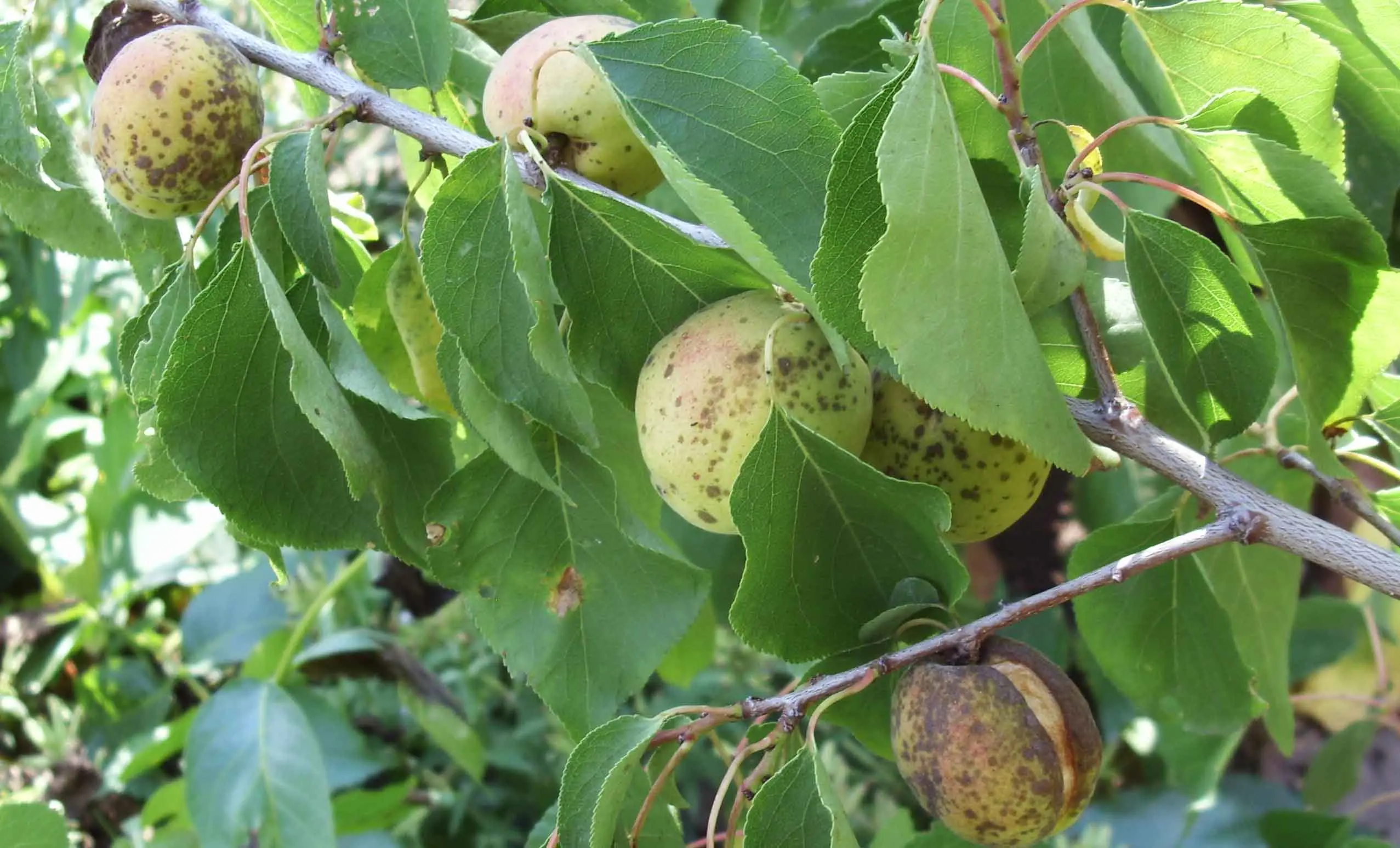
Breeders are working to develop moniliosis-resistant apricot varieties, but so far, with varying success, they have managed to reach an average in such as: Dzhengutayevsky, Red-cheeked, Red-cheeked late, Kuban black, Tamasha, Black velvet.
Mushroom Waltz
The next apricot disease is the Wals mushroom. The name itself is associated with everyone’s favorite ballroom dance. But this is no coincidence, the bacteria of the fungus multiply according to the scheme of waltzing guests (infection) with the hosts (water flows).
The fungus appears as orange knots that grow on the branches of the apricot and in the bark. You will recognize an infected object by stunted yellowing leaves and dried branches. An infectious disease occurs as a result of the parasite getting into the wounds of trees. In this regard, it is not recommended to prune fruit during the dormant period. To keep the soil under the tree drained, use a fungicide spray.
Bacterial spotting
The most common disease in all climatic zones where apricot grows is bacterial spot. As soon as you see dark watery spots on the leaves, sound the alarm. After all, further they will dry out and turn yellow. Fruits infected with bacteria are covered with brown spots that increase in size every day.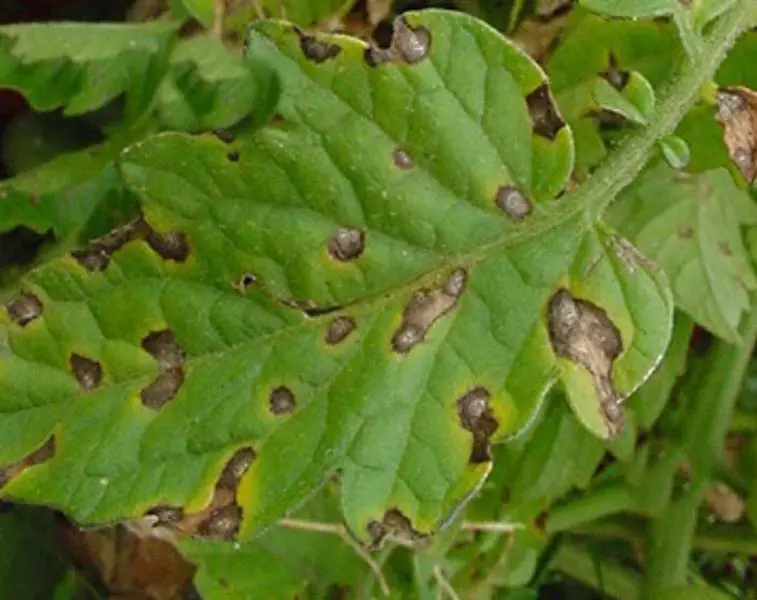
To protect the apricot from spotting, it is necessary to carry out a crop rotation, that is, to sow a lot of plants around that are not susceptible to disease. It is also worth carrying out weed control around the tree. Before planting the seeds, you need to check if they are infected with spots. For prevention, it is necessary to spray the plants with copper sulfate.
Verticillosis
One of the very harmful and insidious fungi is verticillium, as it is a soil parasite that infects everything in the circle. As a result of this type of disease, a tree can expect a fatal outcome. The process of wilting of apricot leaves starts from below, and as a result, green leaves can only be seen at the top.
It is recommended to fight this pest at an early stage, as soon as the disease has begun. Some of the best drugs for treatment are: fundazol, previkur, vitaros and others.
Cytosporosis
A fungus that lives between the bark of a tree and wood and manifests itself as brown-brown spots is cytosporosis. The leaves begin to wither from the top, the bark is taken in dark streaks. Over time, the disease moves down, affecting all the branches and the trunk in its path, including. The affected branches dry up, and the tree itself dies behind them.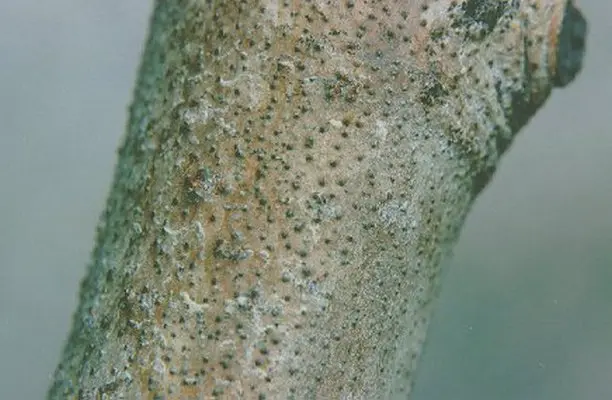
There is one type of variety that cannot be defeated – zhardeli. And all the rest should be treated with the timely removal of dry branches so that the spread of diseases does not occur in the future. But it must be remembered that not a single piece of the affected bast should be left to stop the process. And it is also very dangerous for all gardens to leave dry trees in a circle, because this threatens to infect with a severe infection.
perforated spotting
A disease that is very common in the south is perforated spotting. Previously, almost all apricots were infected with it. Leaves and fruits fall first under the “distribution”. They are covered with reddish-brown spots, which after 1-2 weeks turn into holes, and after a while the leaf fall begins.
The fruits are affected by reddish-brown spots while still green, and by the time they should be ripe, there is a complete deformation.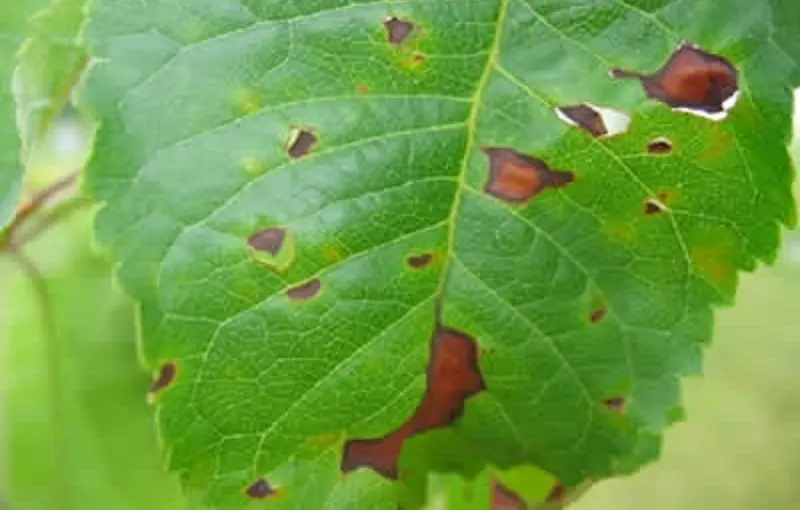
In order to cure the apricot and not infect the rest of the trees, it is recommended to cut the foci of the infection carrier and burn them. Disinfect wounds and cracks with garden putty with the addition of copper or iron sulfate. And most importantly, do not forget about prevention in the fall and early spring – spraying with 5% Bordeaux liquid, after flowering – 1%, and apply soil fertilizer during the period of premature leaf fall.
Comedy
Gum disease, or gum, is one of the diseases of apricot, in which a large number of trees are infected, and over time it increases even more. To carry out the treatment, it is necessary to cut off all the affected areas of the tree, disinfect with a solution of copper sulfate. Then treat the cut with garden broth.
Summing up the above, we conclude that before planting an apricot orchard, it is simply necessary to study fruit diseases and how to treat them.
Video “Features of growing apricots”
The recording tells about how to protect an apricot from pests and diseases, as well as how to properly plant and care for a tree.









